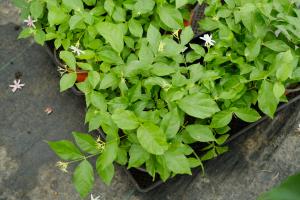Introduction
Ginkgo trees are native to China and are often planted for their beautiful golden-yellow leaves that add color to any landscape. However, planting a ginkgo tree is a serious decision and should not be taken lightly. In this article, we will explore the factors you should consider before deciding to plant a ginkgo tree.
Environmental Factors
Ginkgo trees are hardy and adaptable, but they do have specific environmental requirements. They prefer well-draining soil with a slightly acidic pH level, and they require full sun to thrive. The tree is tolerant of both cold and hot temperatures, but it may struggle in extremely dry or wet conditions. Before you plant a ginkgo tree, you should assess whether your climate and soil conditions are suitable for it.
Size and Space Requirements
Full-grown ginkgo trees can reach up to 80 feet tall and have a broad canopy that can spread 30-40 feet wide. You should have enough space to accommodate such a large tree without it interfering with buildings, power lines, or other trees. Furthermore, the tree's roots can spread widely, so be mindful of planting it near pavement or underground utilities.
Care and Maintenance
Ginkgo trees are relatively low maintenance, as they don't require regular pruning or fertilization. However, the tree does produce an abundance of fruit in the fall that can create a mess on the ground. Additionally, ginkgo leaves tend to drop all at once, creating a dense pile that can be difficult to clean up. Consider whether you have the time and resources to maintain the tree before planting it.
Benefits and Drawbacks
One of the main benefits of planting a ginkgo tree is its aesthetic value. The tree's golden-yellow leaves in the fall add visual interest to any landscape. Furthermore, ginkgo leaves and seeds have been used in traditional Chinese medicine to improve memory, reduce anxiety, and treat asthma. However, some people may be allergic to the tree's pollen or fruit, making it unpleasant to be around during allergy season. Additionally, the tree's fruit has a strong, unpleasant odor that some find offensive.
Conclusion
Planting a ginkgo tree is a decision that requires careful consideration. You should evaluate the environmental factors, space requirements, care and maintenance, as well as the benefits and drawbacks before deciding to plant a ginkgo tree. If you determine that a ginkgo tree is right for your property, the tree can be a beautiful addition to your landscape and provide many benefits for years to come.

 how many times do yo...
how many times do yo... how many planted tre...
how many planted tre... how many pine trees ...
how many pine trees ... how many pecan trees...
how many pecan trees... how many plants comp...
how many plants comp... how many plants can ...
how many plants can ... how many plants and ...
how many plants and ... how many pepper plan...
how many pepper plan...





























